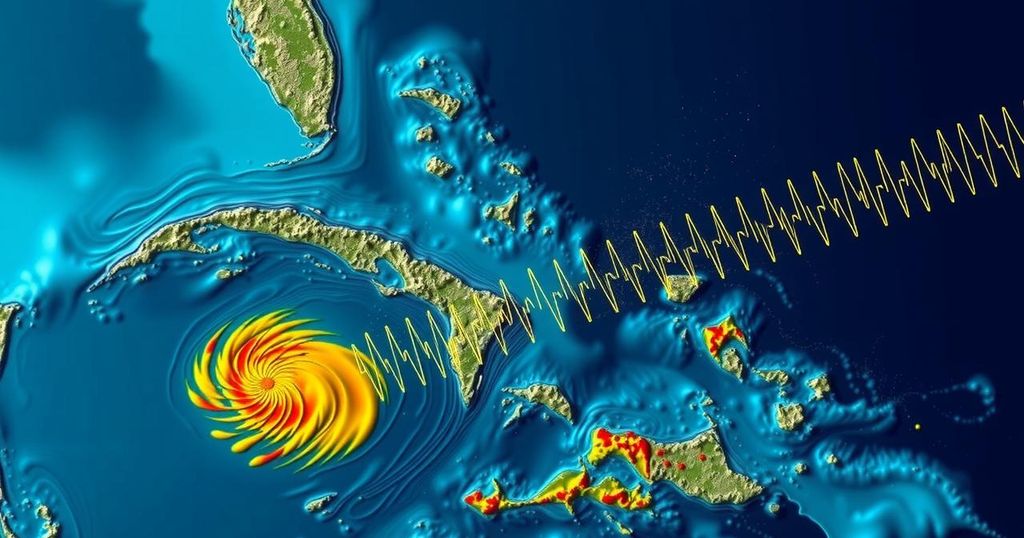As hurricane season concludes, residents of the U.S. Virgin Islands must remain cognizant of the ongoing risk of earthquakes, highlighted by a recent 6.8 magnitude quake near Cuba. The Puerto Rico Seismic Network plays a critical role in monitoring seismic activity and ensuring public safety. Preparedness, through understanding earthquake mechanics and safety protocols, is essential for minimizing risk to individuals in the region.
As the hurricane season concludes, it is essential to recognize the frequent seismic activity that impacts the U.S. Virgin Islands and the surrounding Caribbean region year-round. In light of a recent 6.8 magnitude earthquake that struck near Cuba, it is imperative that residents and visitors alike appreciate the significance of earthquake readiness. The Puerto Rico Seismic Network (PRSN) plays an integral role in monitoring seismic events, providing vital information and conducting research to enhance public safety regarding earthquakes and tsunamis in the area. The PRSN, affiliated with the University of Puerto Rico Mayagüez, functions as the primary seismic monitoring authority for Puerto Rico and the Virgin Islands. With numerous seismic stations across the Caribbean, the PRSN offers real-time data regarding earthquakes, disseminating crucial updates swiftly through their platforms and social media. They utilize various instruments to track seismic activities, ensuring that potential threats are communicated effectively to emergency management agencies and the public. Following the quake in Cuba, PRSN representative Elizabeth Vanacore confirmed that the event did not signify a direct threat to the U.S. Virgin Islands. The seismic activity in question was associated with the Septentrional-Oriente Fault Zone, an area known for its significant seismic incidents. Vanacore clarified that the earthquake phenomena do not predict similar occurrences in the nearby region, assuring that the tectonic activities involve complex fault interactions without an established pattern. Vanacore elaborated on how earthquake magnitude correlates with energy release. A magnitude 6 earthquake releases energy tantamount to 86,000 tons of TNT, while a magnitude 7 earthquake equates to 478,000 tons. Furthermore, Vanacore noted the physical limitations to earthquake magnitudes, stating that no faults large enough to generate a magnitude 10 earthquake are currently known to exist on Earth. Due to the unpredictability of earthquakes, preparedness is imperative. Individuals are advised to adopt safety protocols, specifically the “Drop, Cover, and Hold On” method during seismic events. While there may not always be noticeable shaking during minor quakes, larger events require situational awareness and prompt action, especially while driving or in public spaces. Community drills, educational resources, and preparedness strategies are strongly encouraged to enhance safety in the event of seismic activities. In summary, although hurricanes often dominate discussions about natural disasters in the Caribbean, earthquakes present a year-round hazard that cannot be overlooked. Continuous monitoring and education are crucial for preparedness and resilience, as the threat of seismic activity remains prevalent in this tectonically active region.
Earthquakes frequently occur in the Caribbean, posing ongoing risks to residents and visitors, particularly in the U.S. Virgin Islands. The recent 6.8 magnitude quake near Cuba serves as a stark reminder of this threat. The Puerto Rico Seismic Network (PRSN), associated with academic institutions, is vital for monitoring earthquake activity, disseminating information, and contributing to public safety regarding these seismic events. Understanding the nature of earthquakes, their magnitudes, and the mechanisms behind them enhances readiness and resilience within affected communities.
In conclusion, while hurricane season may end, the threat of earthquakes in the U.S. Virgin Islands remains constant. The efforts of the Puerto Rico Seismic Network in monitoring seismic activity and educating the public are indispensable. It is crucial for individuals to engage in preparedness activities and remain informed about potential seismic hazards and safety protocols. Enhanced awareness helps bolster community resilience against potential earthquakes and tsunamis in this active tectonic region.
Original Source: stthomassource.com






